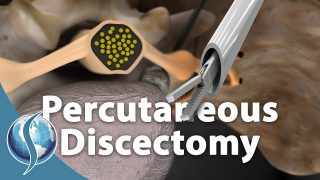Is Trauma the Cause of Cervical Radiculopathy?
As a practicing orthopaedic Spine Surgeon, I am constantly asked about the cause of cervical radiculopathy. From the patients, I am asked ” Doc, do you know why I developed this pinched nerve in my neck?”. And, since we are now in this environment of medical cost evaluation, the insurance companies then ask ” Doctor, in your opinion, what is the cause of the cervical radiculopathy?” Fortunately for all involved, the vast majority of cervical radiculopathy ( pinched nerves in the neck) resolve over time, without significant aggressive surgical intervention. But, during the time it takes to recover, there are usually associated costs.
There are the direct costs of medical evaluation, and treatment. These costs do include physician visits, diagnostic testing, and treatment. For mild cases, it means a call to the physician, a few over the counter medications, and activities modifications until the episode resolves. In more serious cases, it means multiple physician visits, expensive testing such as MRI’s, expensive and time consuming physical therapy, time off from work. In the most serious scenario, it means invasive treatments such as epidural steroids, or surgery.
Then, there are the indirect costs that are also real. Time off from work for the patient. Time off from work for their families and care givers. Financial costs secondary to income disruption. Potential longer term issues such as disability, and effects on future insurance eligibility ( health, disability, worker’s compensation, home owners, automobile, etc). Fortunately, the most serious scenario is the least common. But, if that is the scenario, hard questions must be answered.
The physician tasked to answer the questions on the cause of the radiculopathy must weigh many competing factors. In the end, the opinions offered by that physician may determine which entity will pay the costs related to that radiculopathy. In the mild cases, few will debate or even care who will be responsible for the minimal costs. But, in the rarer, but much costlier scenario, that physician must consider all the factors, else that physician’s judgement and credibility will often come under scrutiny. Some will say, that physician’s credibility will come under scrutiny no matter what.
In the 1994 Brain article by Radhakrishnan, there is information regarding cervical radiculopathy that gives physicians information that may be helpful in determining the question of cause of cervical radiculopathy. To summarize, 561 patients from the May Clinic registry had medical information epidemiological survey regarding cervical radiculopathy. The average age of the patients was about 48 years. A history of physical exertion or trauma preceded the onset of cervical radiculopathy symptoms on 14.8% of the patients. A prior history of lumbar radiculopathy was present 41% of the time. The mean duration of symptoms was 15 days. A confirmed disk protrusion was responsible for only 21.9% of the radiculopathy. 68.4% of the cervical radiculopathy was related to spondylosis, disk or both. A combination of radicular pain, sensory deficit, and objective muscle weakness was predictors or a decision for surgery. At followup, 90% of the population was asymptomatic or mildly incapacitated due to cervical radiculopathy. There are additional points to ponder in this article. To my interpretation, determiners need to decide if the cause is related to a trauma, or other factors. With only 15% of cervical radiculopathies associated with trauma, the burden is on proving if any traumatic event was the cause.
This type of information should be weighed as physicians, attorneys, and insurance adjustors discuss the cause of the cervical radiculopathy and the responsibility of the costs associated with the radiculopathy. As for the poor patient, he or she is only concerned that they have the pain and want a solution to it. Of course the costs associated with the radiculopathy will also matter. But, often, the patient’s perspective of the cause can be clouded by the pain, and the costs.
Last modified: January 5, 2018









